Common names:
rook
Scientific name: Corvus frugilegus
Family: Corvidae (crows)
Habitat: farmland, grassland, open woodland
Diet: invertebrates, grain, fruit and acorns
Predators: birds of prey
Origin: native
Raucous relative of the crow. After a day foraging in the fields, rooks head to the trees en masse; a noisy congregation settling down for a good night’s sleep among the branches.
Common names:
rook
Scientific name: Corvus frugilegus
Family: Corvidae (crows)
Habitat: farmland, grassland, open woodland
Diet: invertebrates, grain, fruit and acorns
Predators: birds of prey
Origin: native
Rooks have all-black plumage, but an iridescent sheen is notable when seen up close. They are slightly smaller than crows, with a typical wingspan of 90cm. The species’ key identifying feature is the grey-white skin at the base of its long, pointed beak. This distinguishes it from the similar-looking carrion crow, which has an all-black beak.
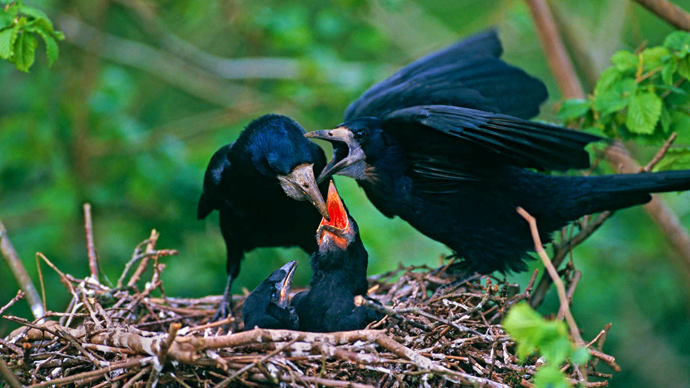
Credit: William Osborn / naturepl.com
Worms, beetles and other invertebrates are the rook’s main food, which it catches by probing the ground with its large beak. It will also feed on grain, fruit, acorns and occasionally carrion and birds’ eggs.
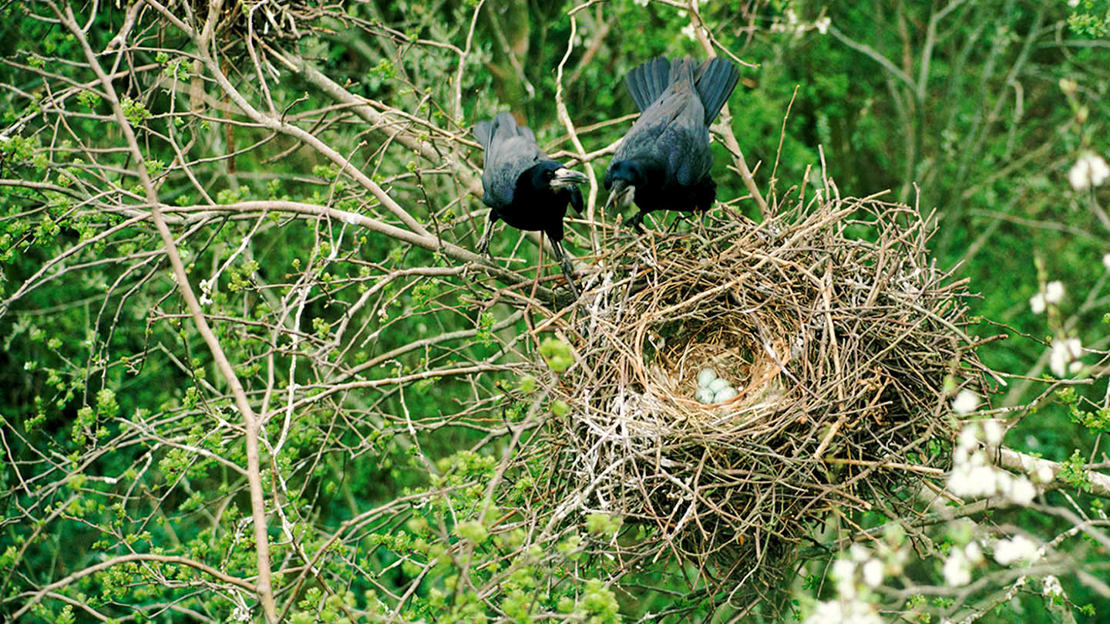
Rooks are intelligent and have demonstrated the ability to use tools and solve problems.
Rooks are communal breeders, nesting in colonies known as rookeries. Nests are built high in the trees and made of twigs and branches. These are broken off trees or stolen from a nearby nest. Some rookeries can contain thousands of birds, with their noisy calls making them easy to discover.
Rooks normally build their nests in February or March, but may start as early as January. We’re interested in learning whether climate change is affecting when rooks start nest building. Why not record your sightings of rooks gathering nesting materials to help us find out?
Typically, three to four eggs will be laid in spring, hatching after around two weeks. Chicks will stay in the nest for just over a month before fledging.
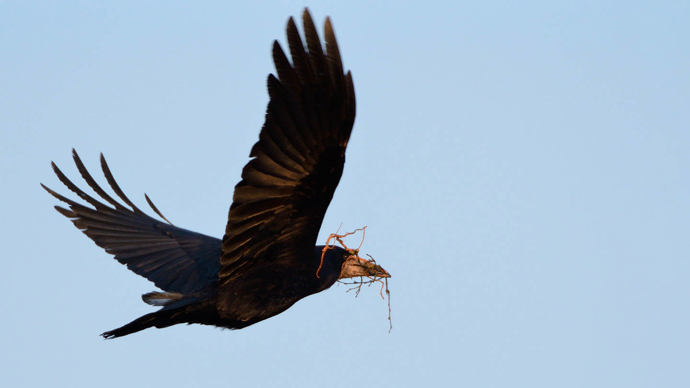
Credit: Nick Upton / naturepl.com
The rook is a common bird with around one million pairs breeding each year. It occurs in farmland and open country across the UK, but is rare in mountainous areas and large towns and cities.
Rooks are often seen feeding alongside jackdaws, a smaller member of the crow family.
As large, noisy and social birds, rooks are easy to spot. Look for groups of black birds feeding in open fields and along roadsides. In winter, keep your eyes peeled for flocks flying above woodland as they come in to roost.
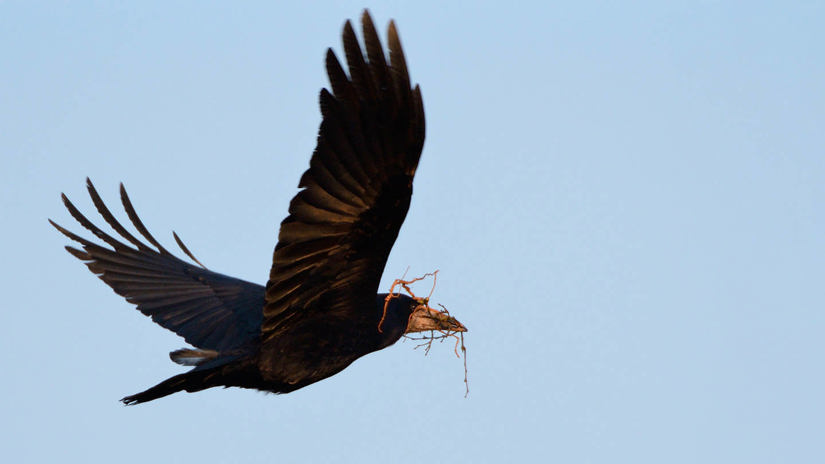
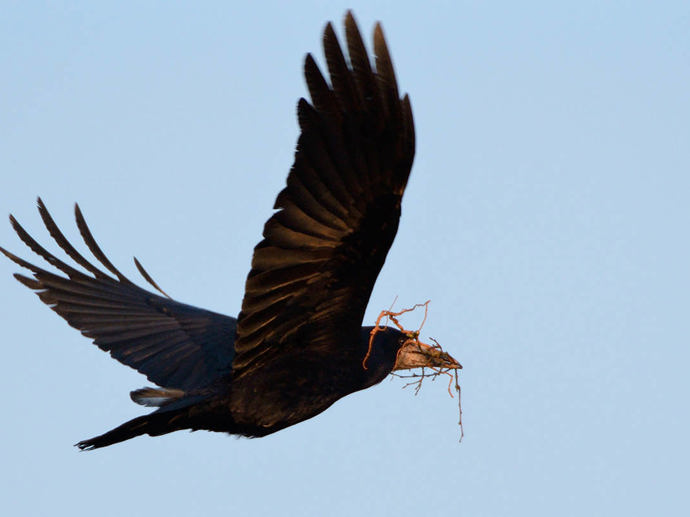
Sally Bavin • 14 Jan 2020
Crows, rooks and ravens are all part of the crow family and can be tricky to identify. Here are our tips on how to tell them apart.
Widespread and numerous, rooks are not of conservation concern. However, a moderate decline in their numbers has been recorded since 1995.
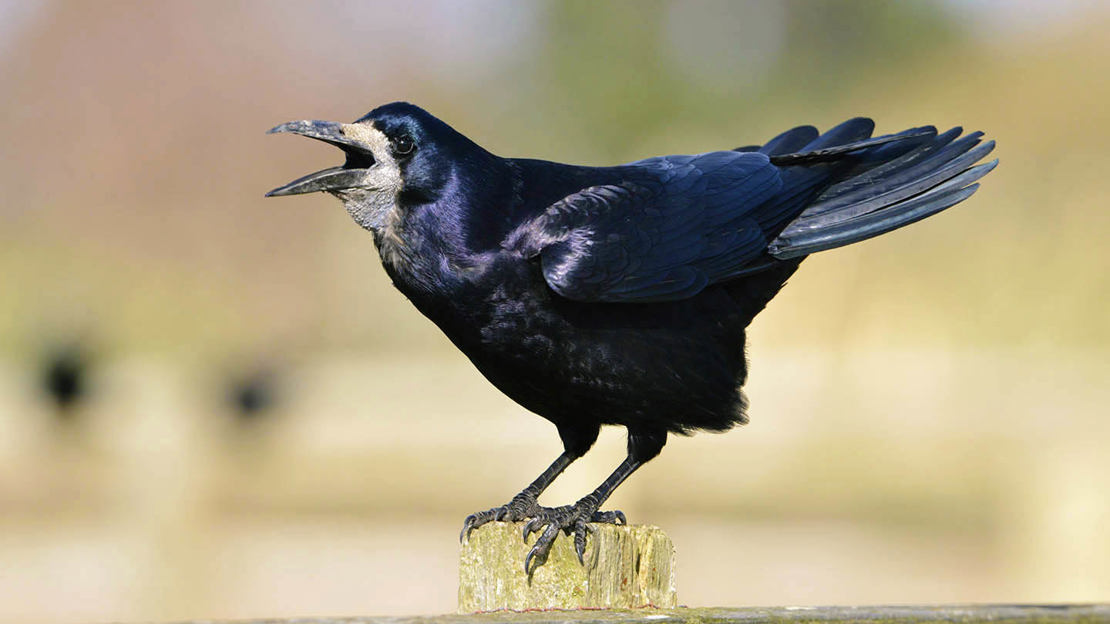
Collective nouns for rooks include congregation, storytelling, building, parliament and clamour.
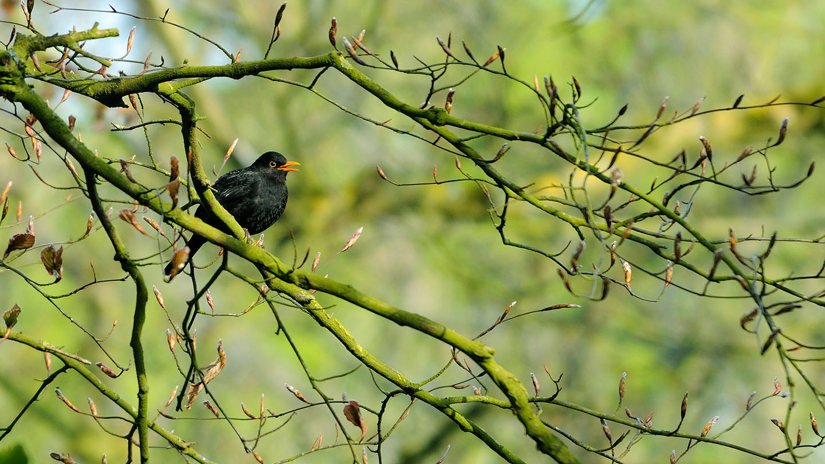
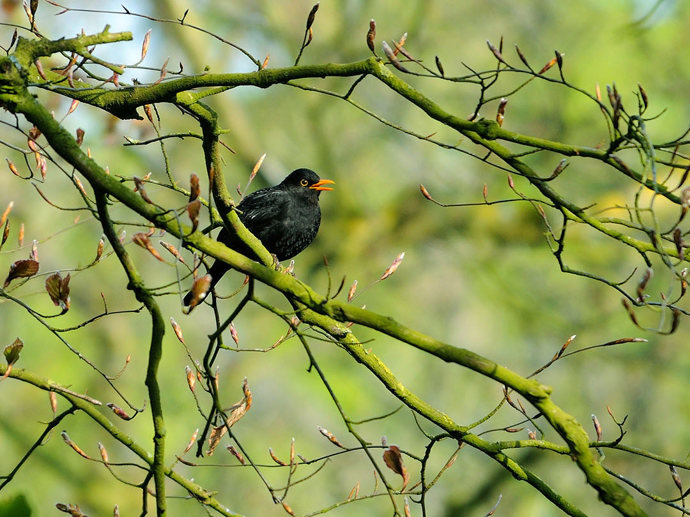
External link
Record the comings and goings of key feathered friends and help scientists track the effects of climate change on wildlife.